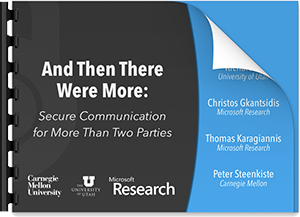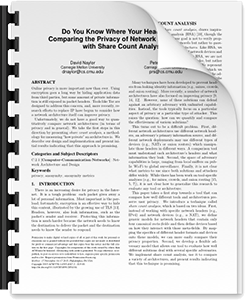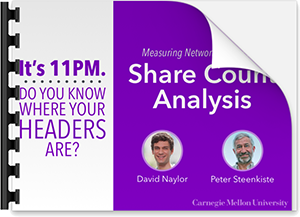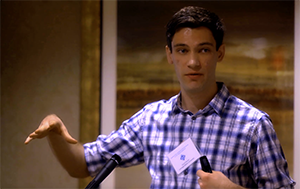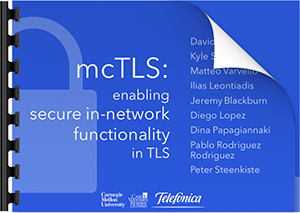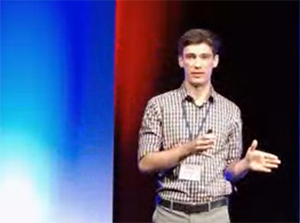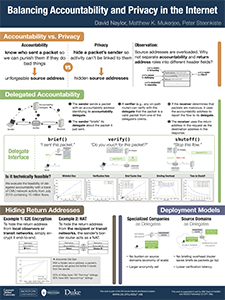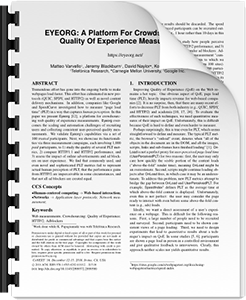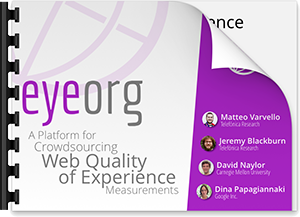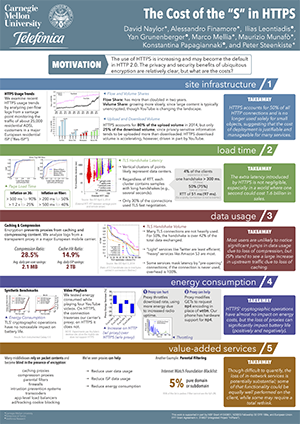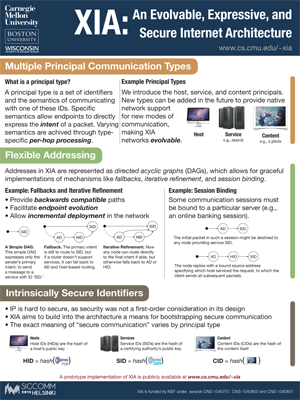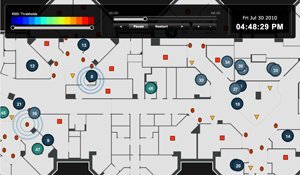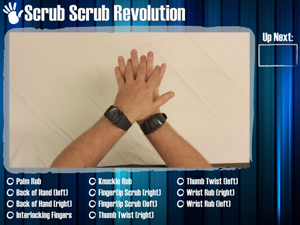Managing Privacy Tradeoffs
Balancing privacy and {accountability, functionality, performance}.
Middlebox TLS (mbTLS)CoNEXT '17
Middlebox TLS allows endpoints to include middleboxes in secure communication sessions, even when those middleboxes run on untrusted infrastructure.
Share Count AnalysisHotNets '15
Share Count Analysis is our first step toward a
general privacy measurement methodology—that is,
a technique for measuring how private
an arbitrary
network architecture or protocol is.
Multi-Context TLS (mcTLS)SIGCOMM '15
Multi-Context TLS allows endpoints to explicitly add
trusted middleboxes to encrypted sessions. It provides
fine-grained access control, so middlebox access can be
restricted to read-only or limited to only part of the
data stream.
BEST PAPER AWARD
Accountable and Private Internet Protocol (APIP)SIGCOMM '14
The Accountable and Private Internet Protocol (APIP)
is designed to balance accountability and privacy.
Senders are able to hide their addresses from the
network by delegating responsibility for their packets
to a trusted third party, which vouches for its
clients' traffic unless a flow has been reported as
malicious.
State of the Web
Monitoring the Web as we move towards HTTP/2 and ubiquitous HTTPS.
EyeorgCoNEXT '16
Eyeorg is a tool for crowdsourcing Web quality of experience measurements.
The Cost of the "S" in HTTPSCoNEXT '14
A collection of measurements showing the deployment
and costs of HTTPS. Costs include handshake latency and
loss of middlebox services like caching and
compression.
Is the Web HTTP/2 Yet?PAM '15
eXpressive Internet Architecture
An Evolvable, Expressive, and Secure Future Internet Architecture
Demo at GEC15
In October 2012, we demoed XIA running on the GENI
network at the 15th GENI Engineering Conference.
Computational Epidemiology
Measuring, modeling, and simulating disease spread.
Scrub Scrub Revolution
Our sensor network project helped us monitor when healthcare workers washed their hands, but equally important is how. The World Health Organization has published recommendations for proper handwashing technique; these guidelines include a set of recommended scrubbing motions. I implemented a training “game” in which users scrub along with an expert while wearing accelerometers on their wrists, allowing the sytem to provide feedback on their scrubbing technique.

